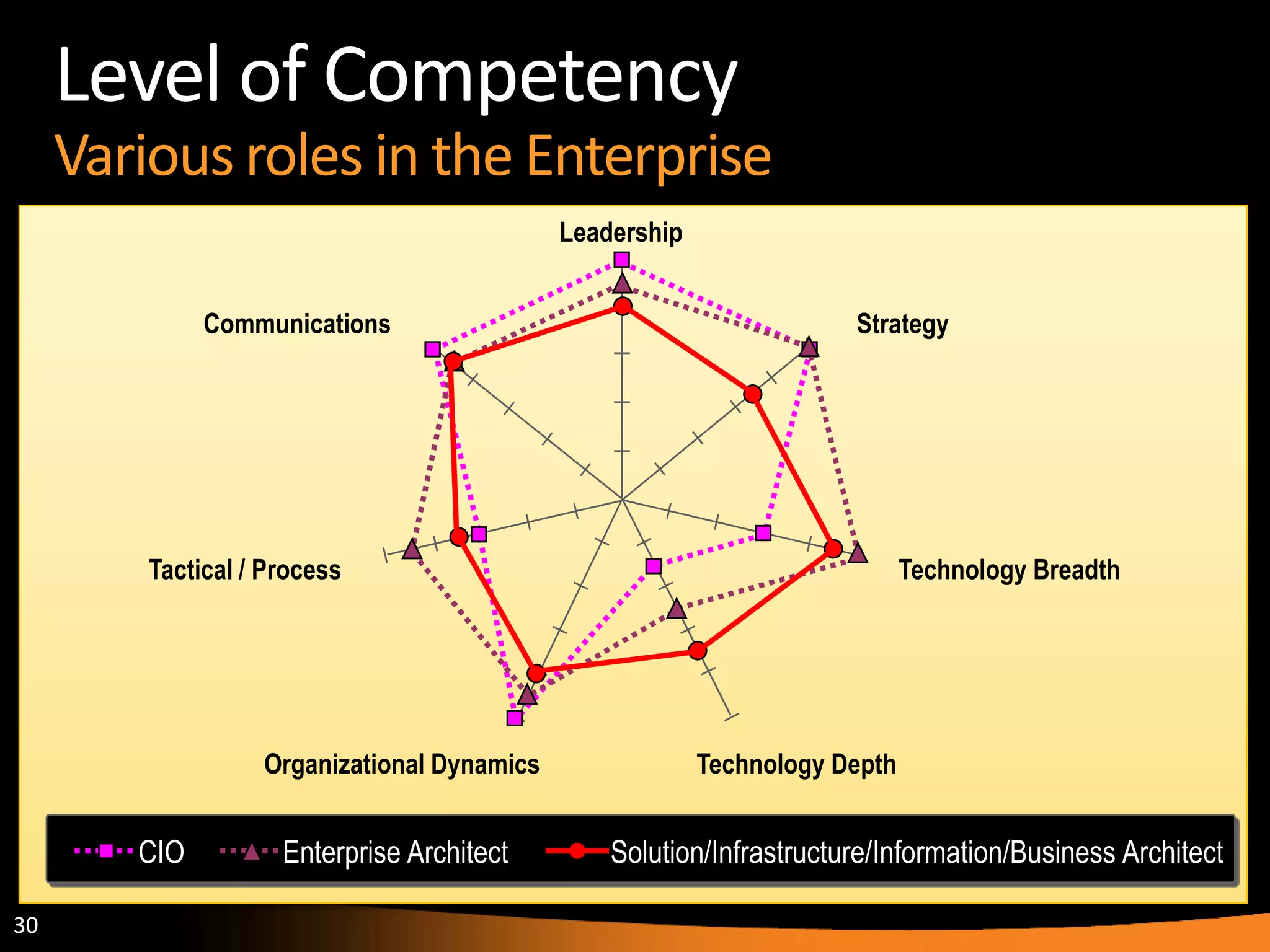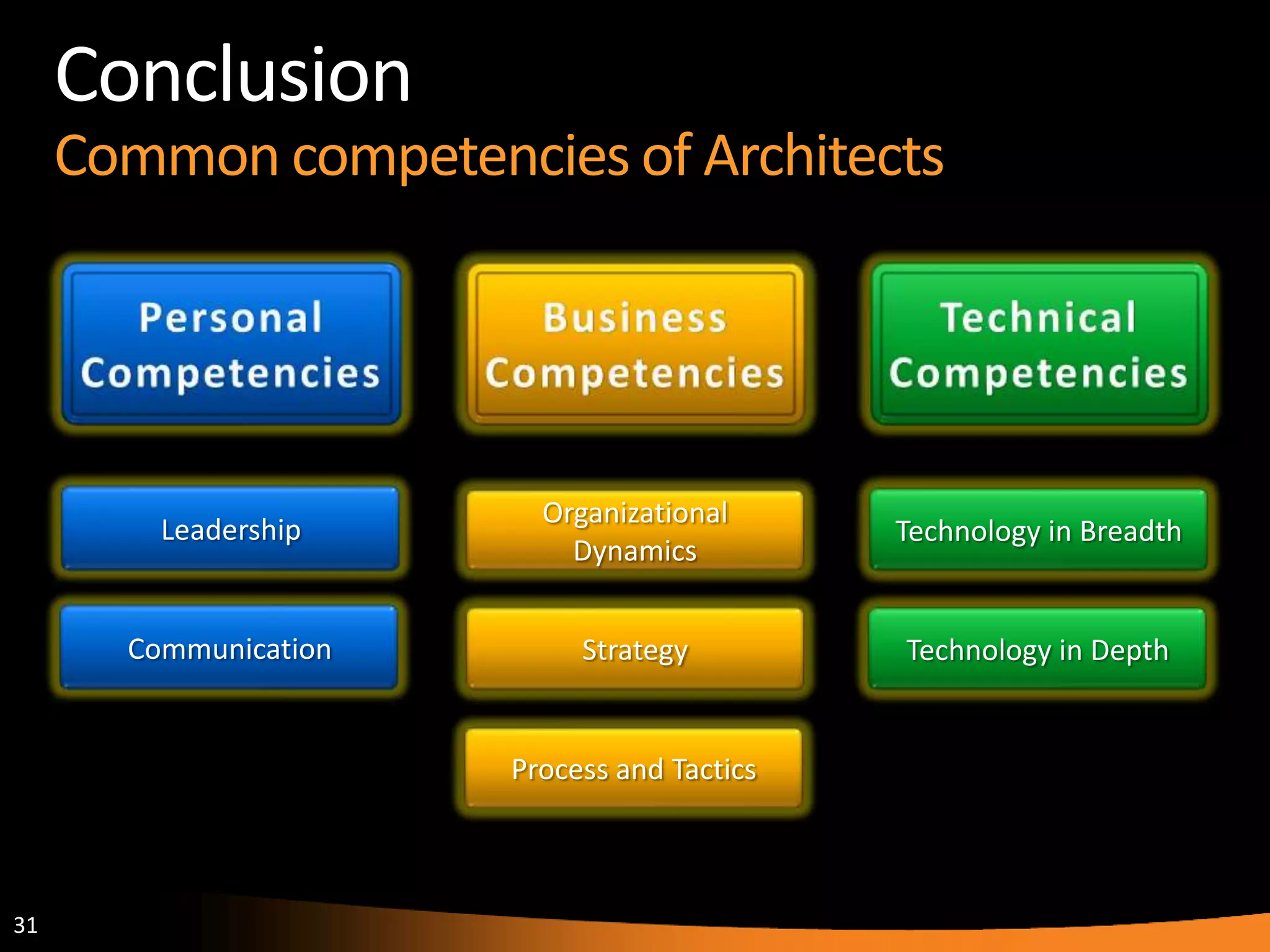The document outlines the essential competencies and responsibilities of architects, emphasizing their need for leadership, communication, organizational dynamics, technology breadth and depth, and strategic thinking. It details the architecting process, key skills, and the importance of adapting to changing environments while also illustrating how to evaluate and grow these competencies through various sample questions. Ultimately, it serves as a guide for aspiring architects to develop their skills and set career goals.
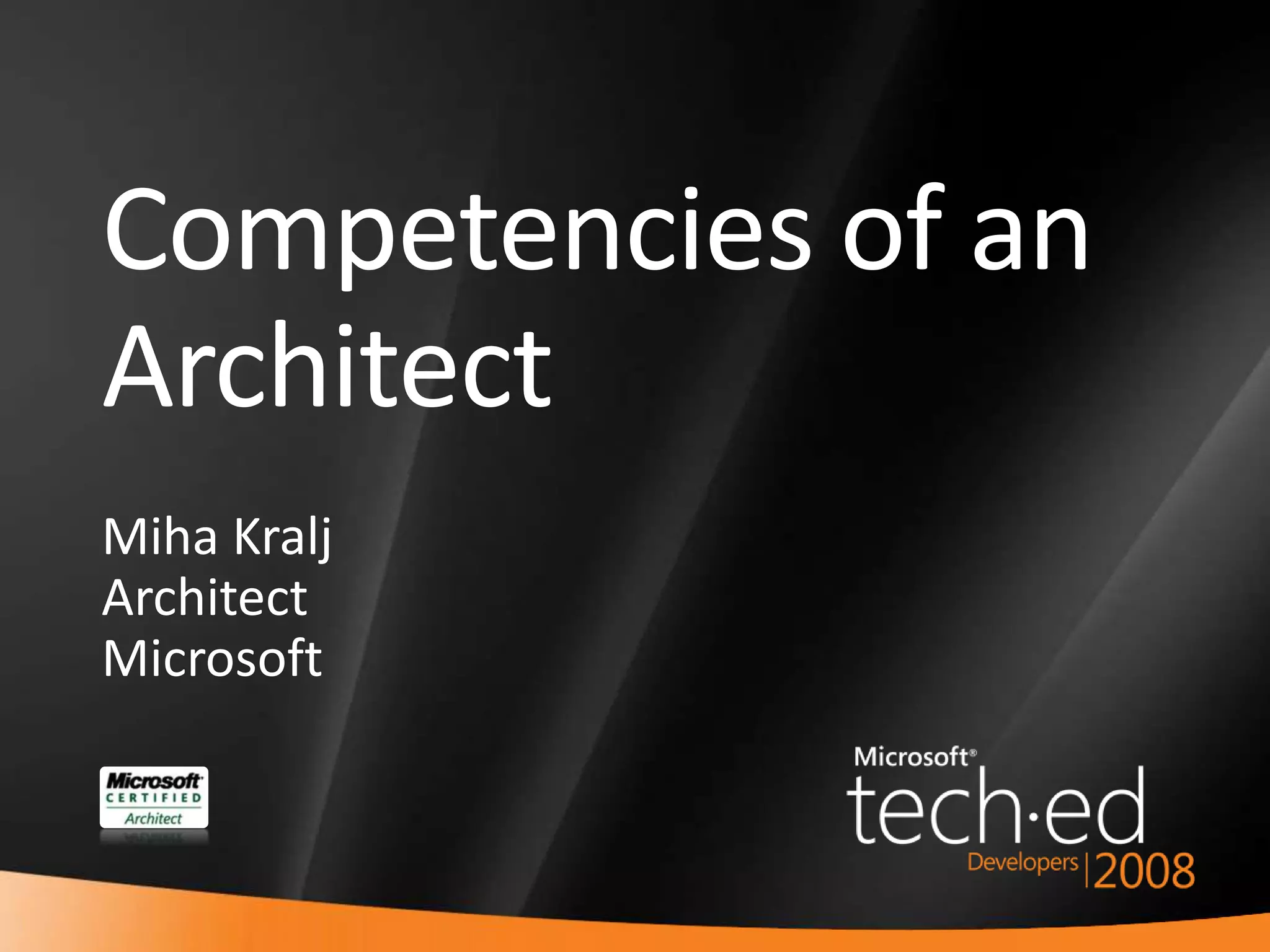
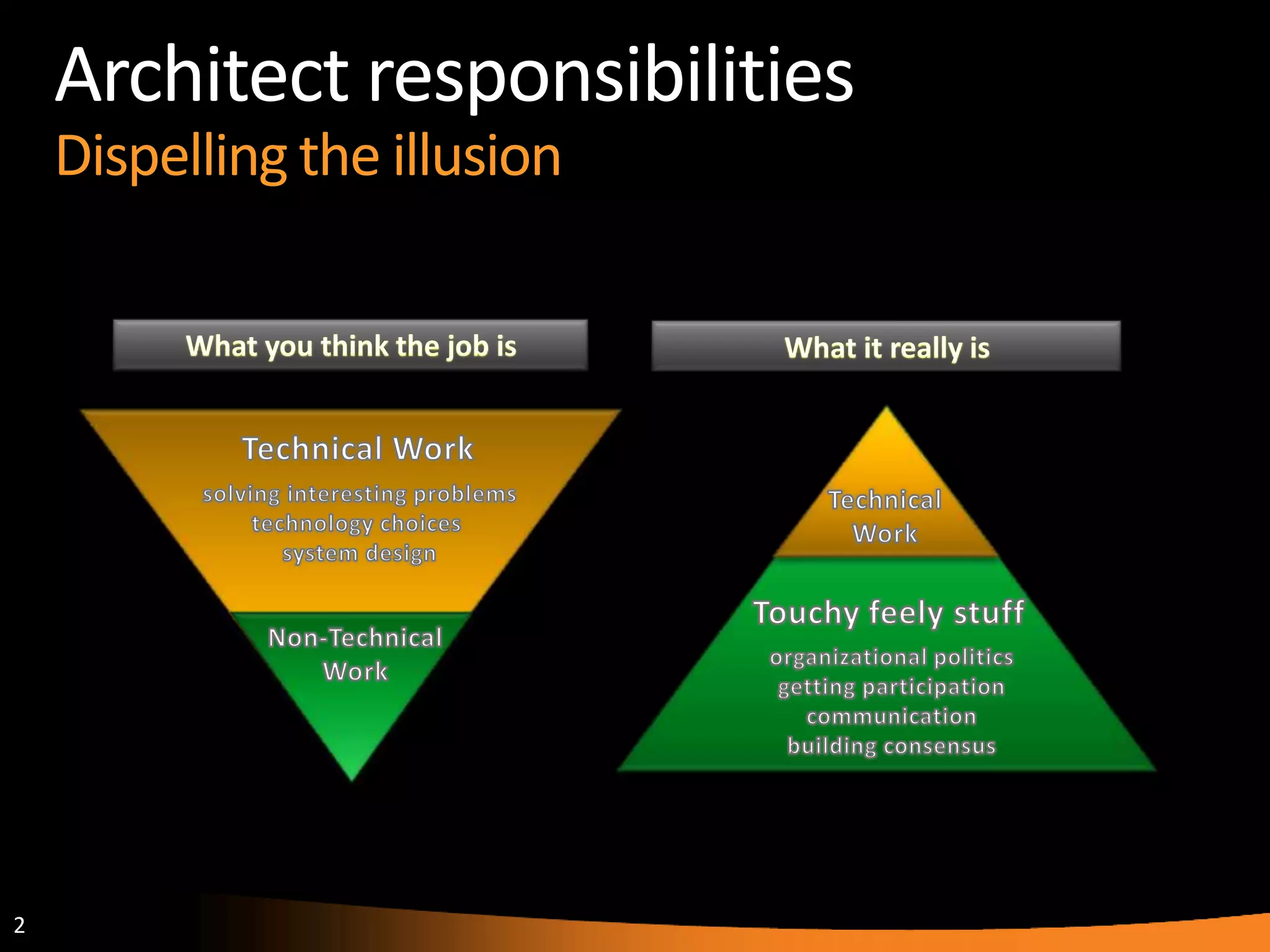
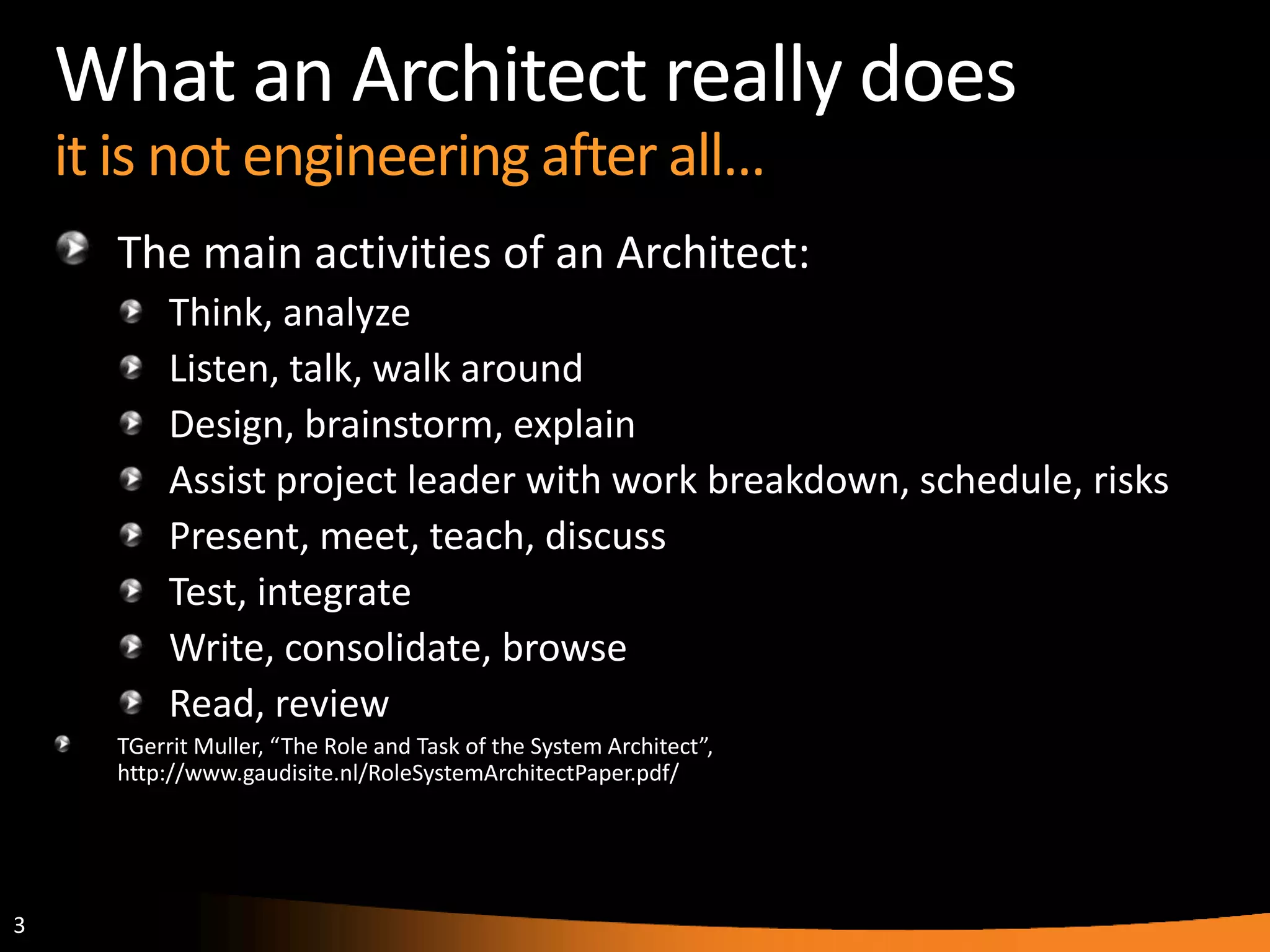
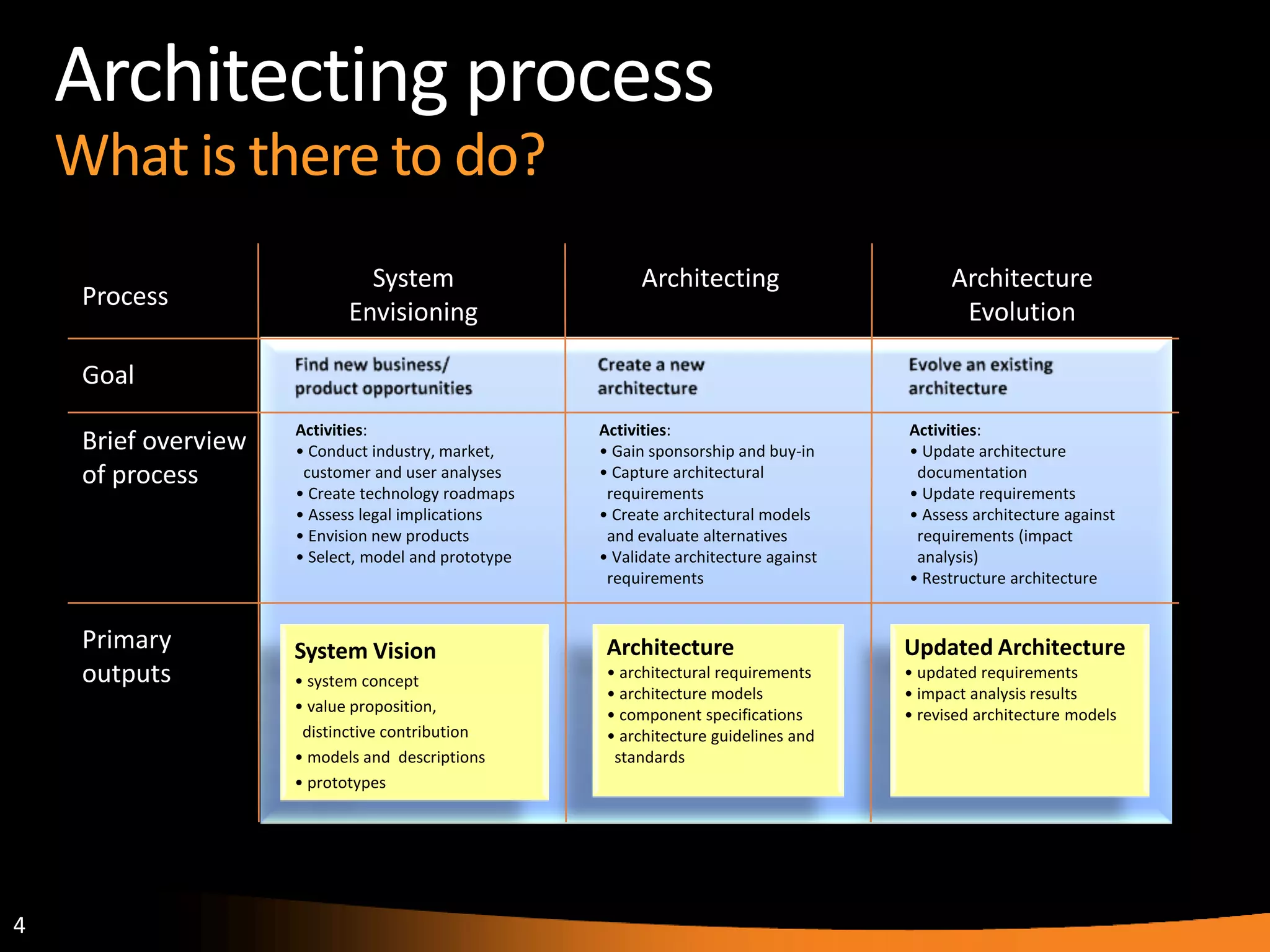
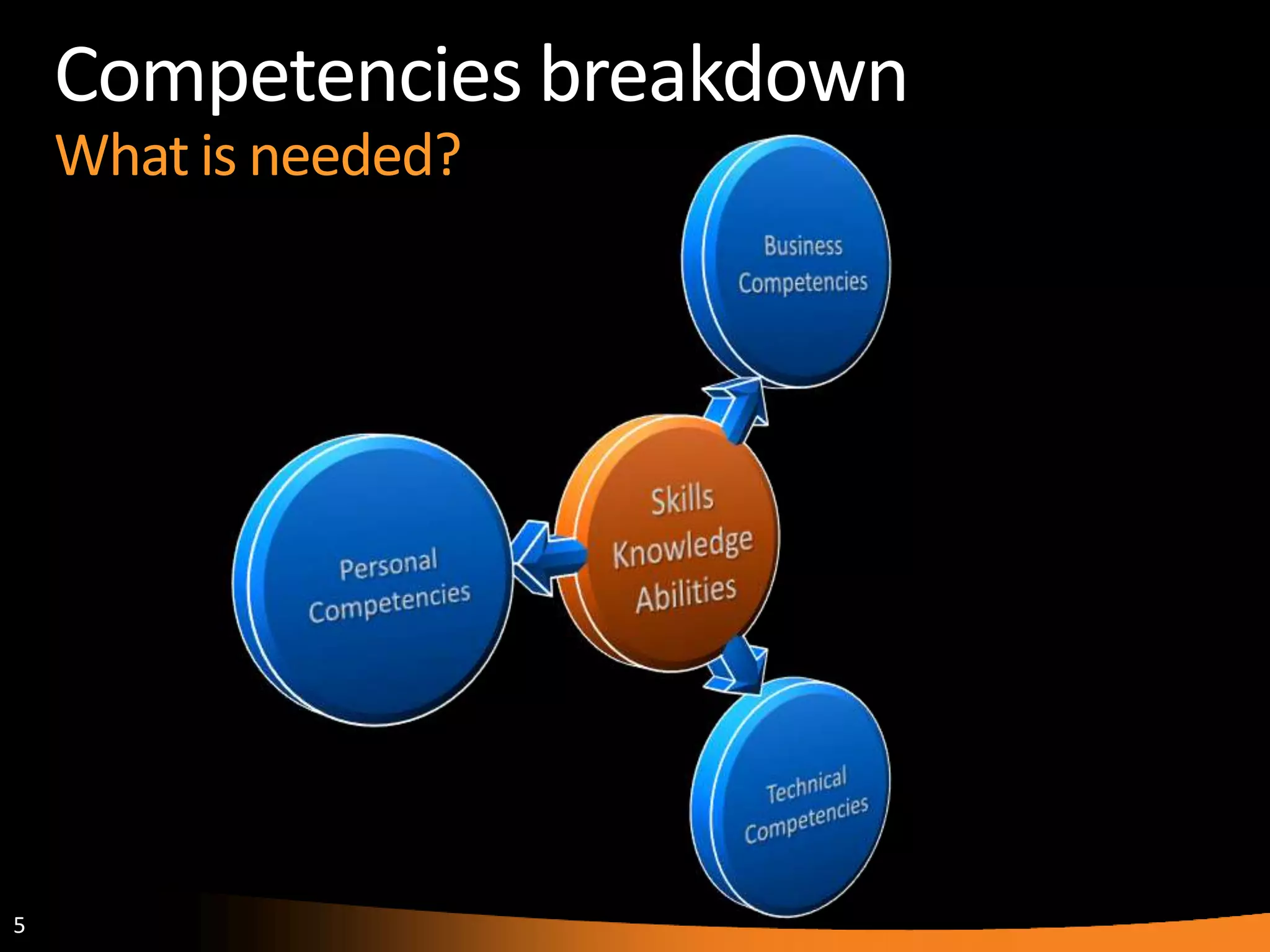
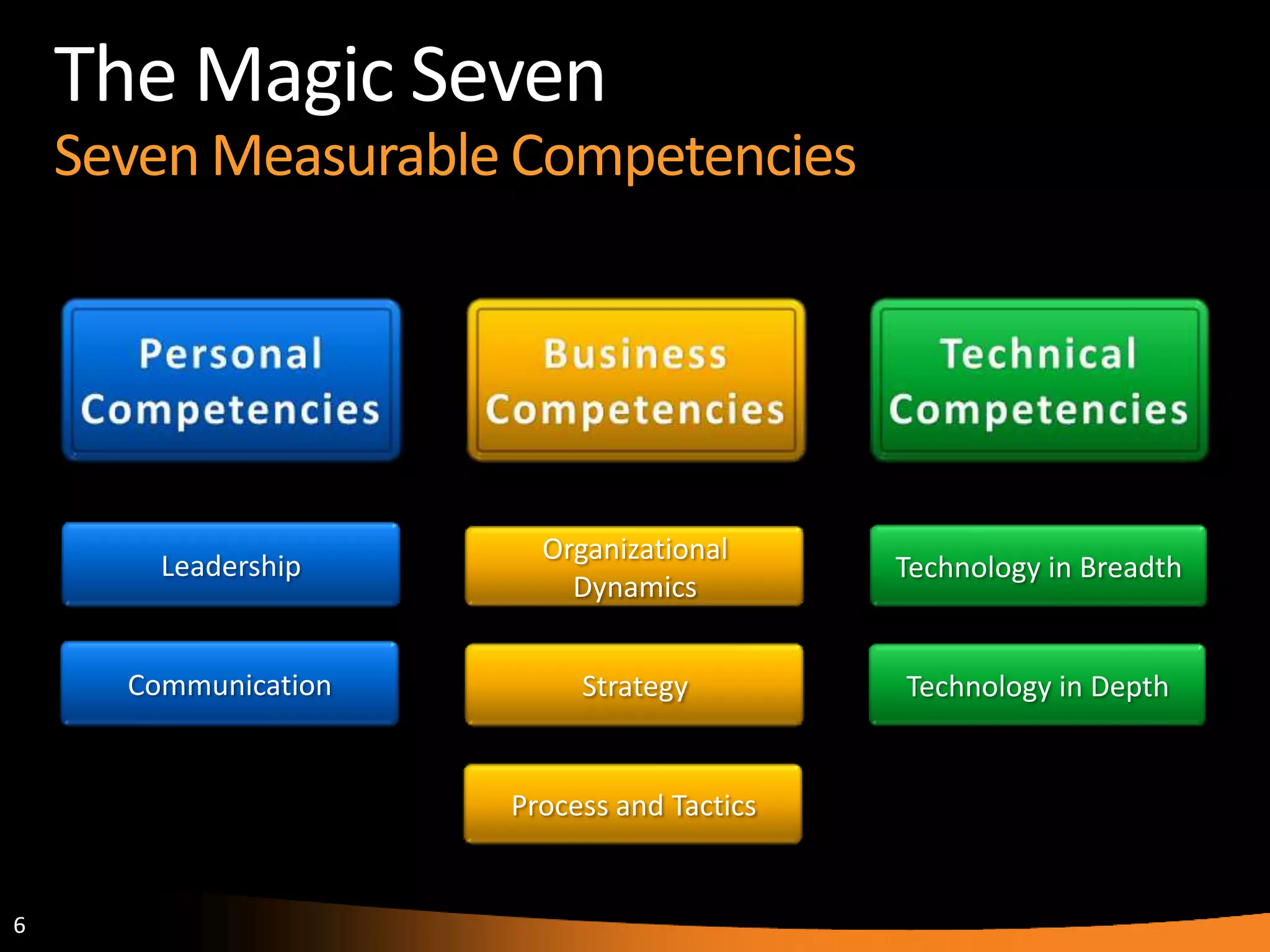
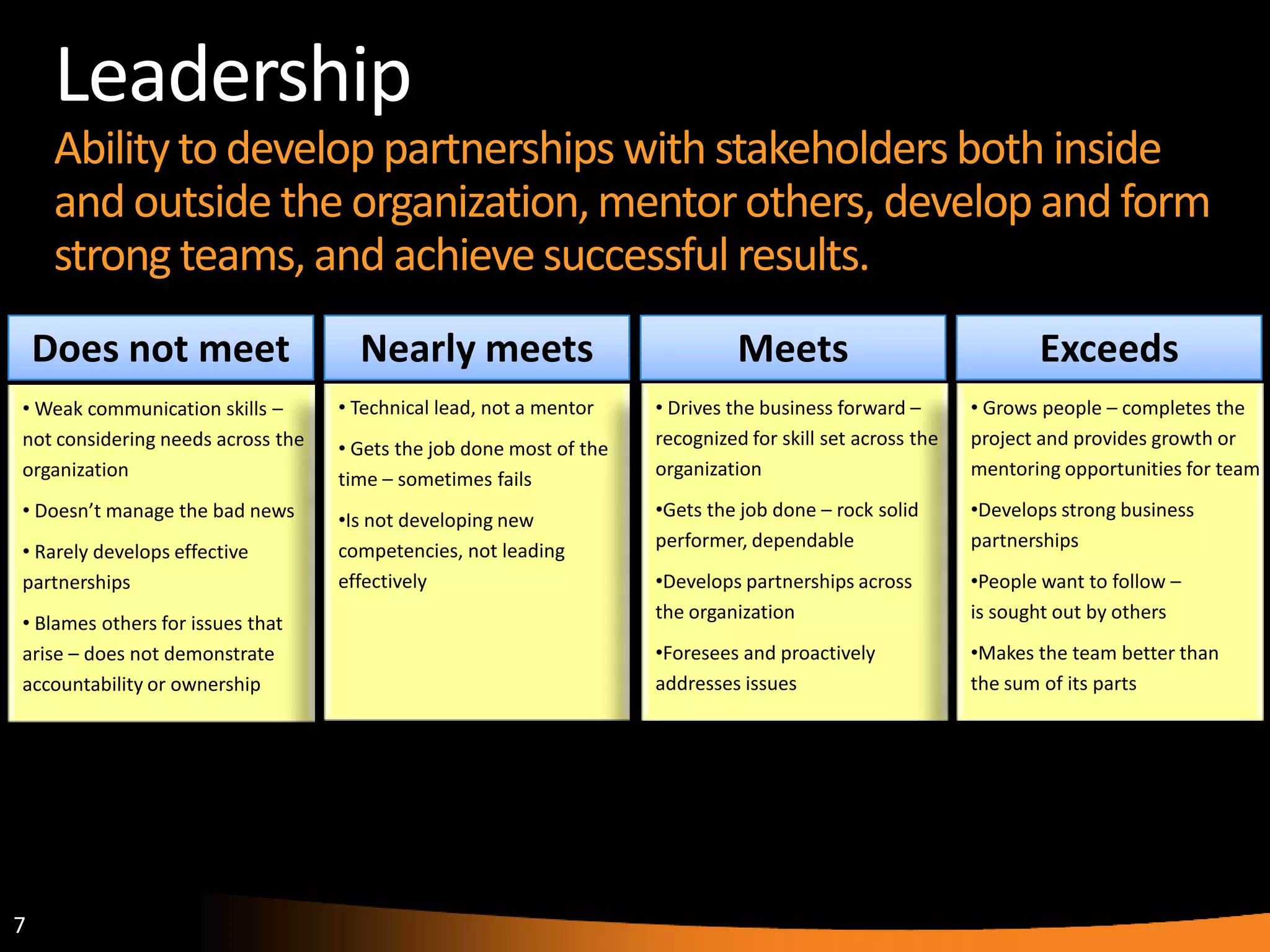
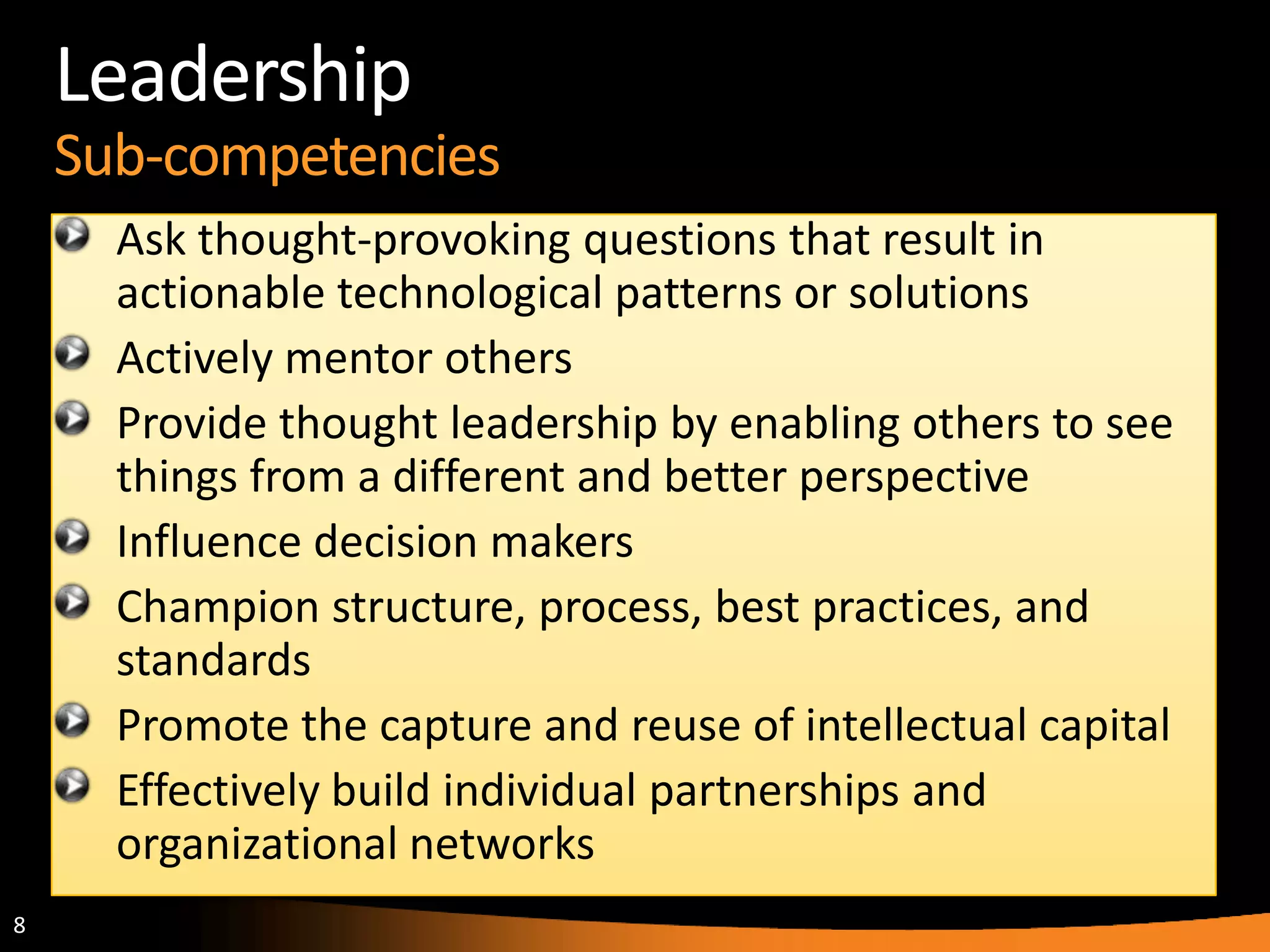
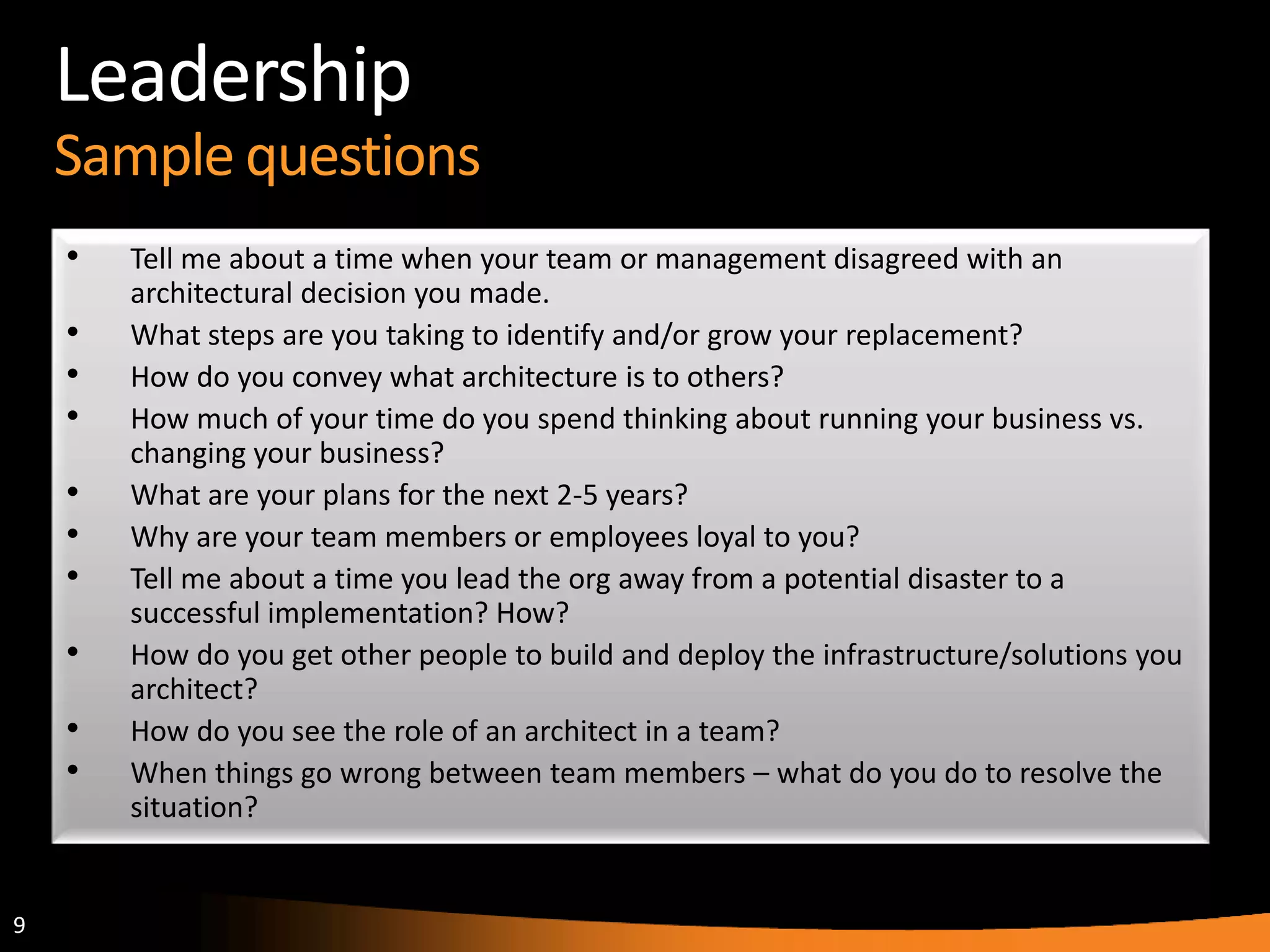

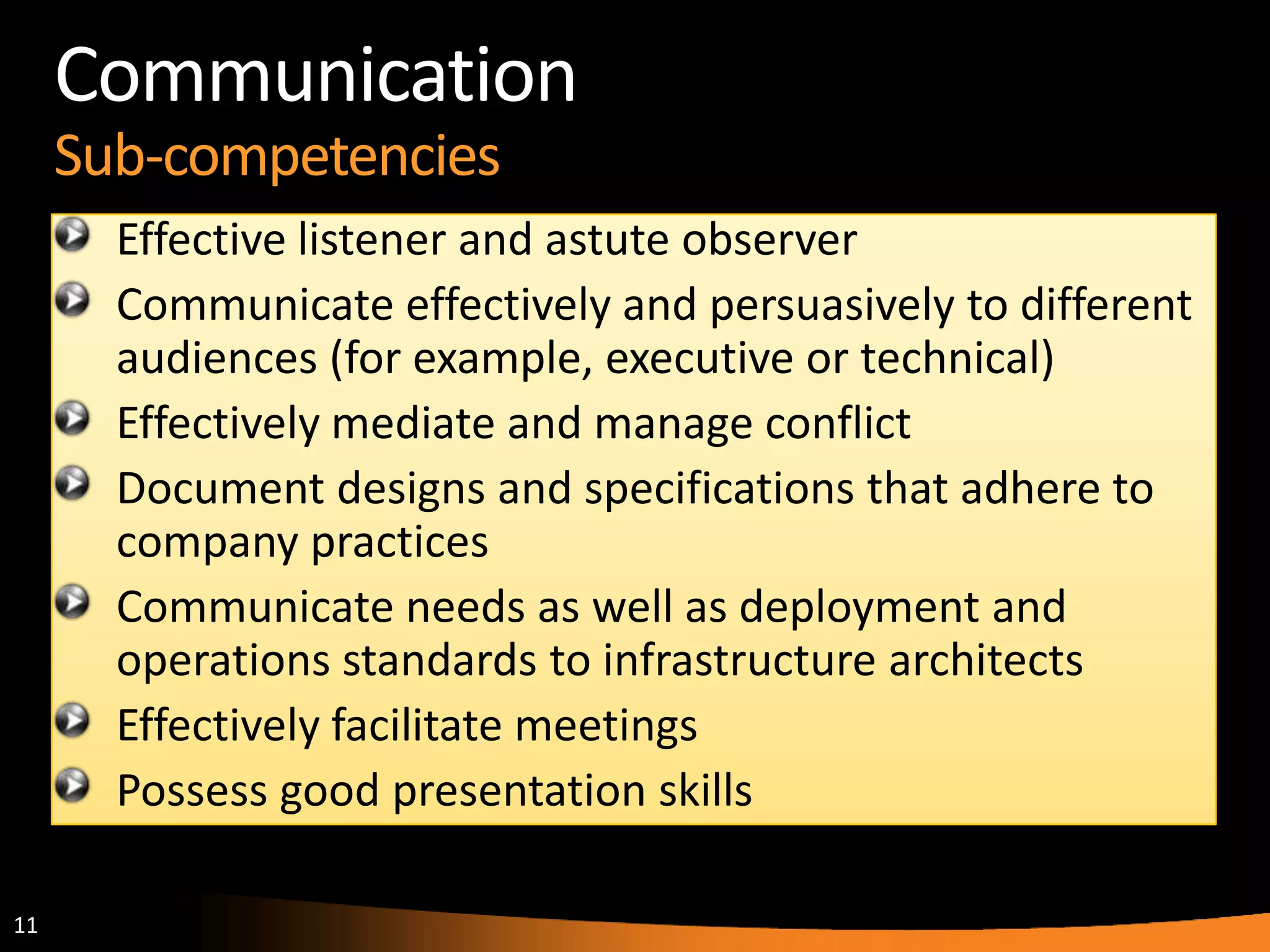
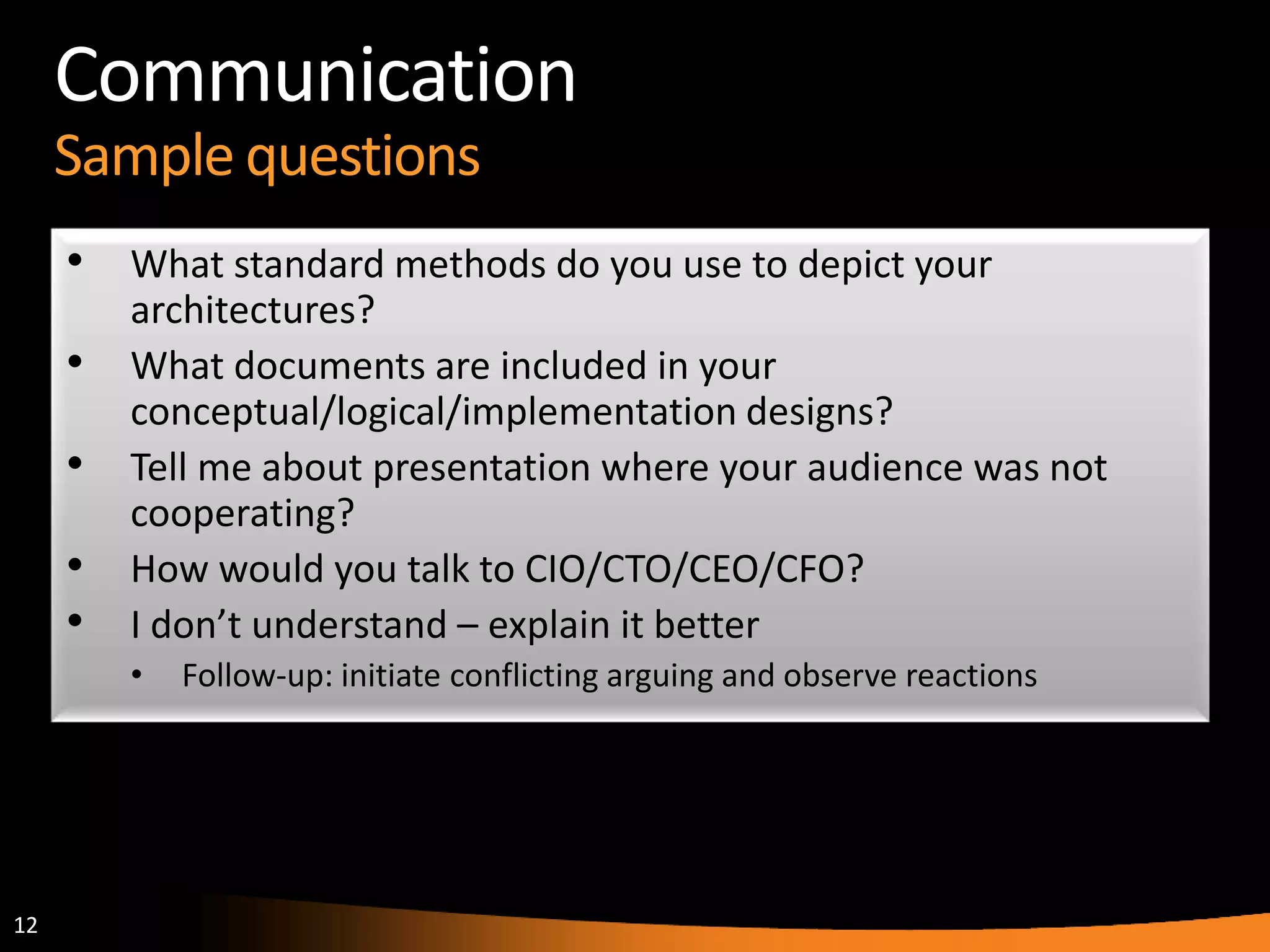
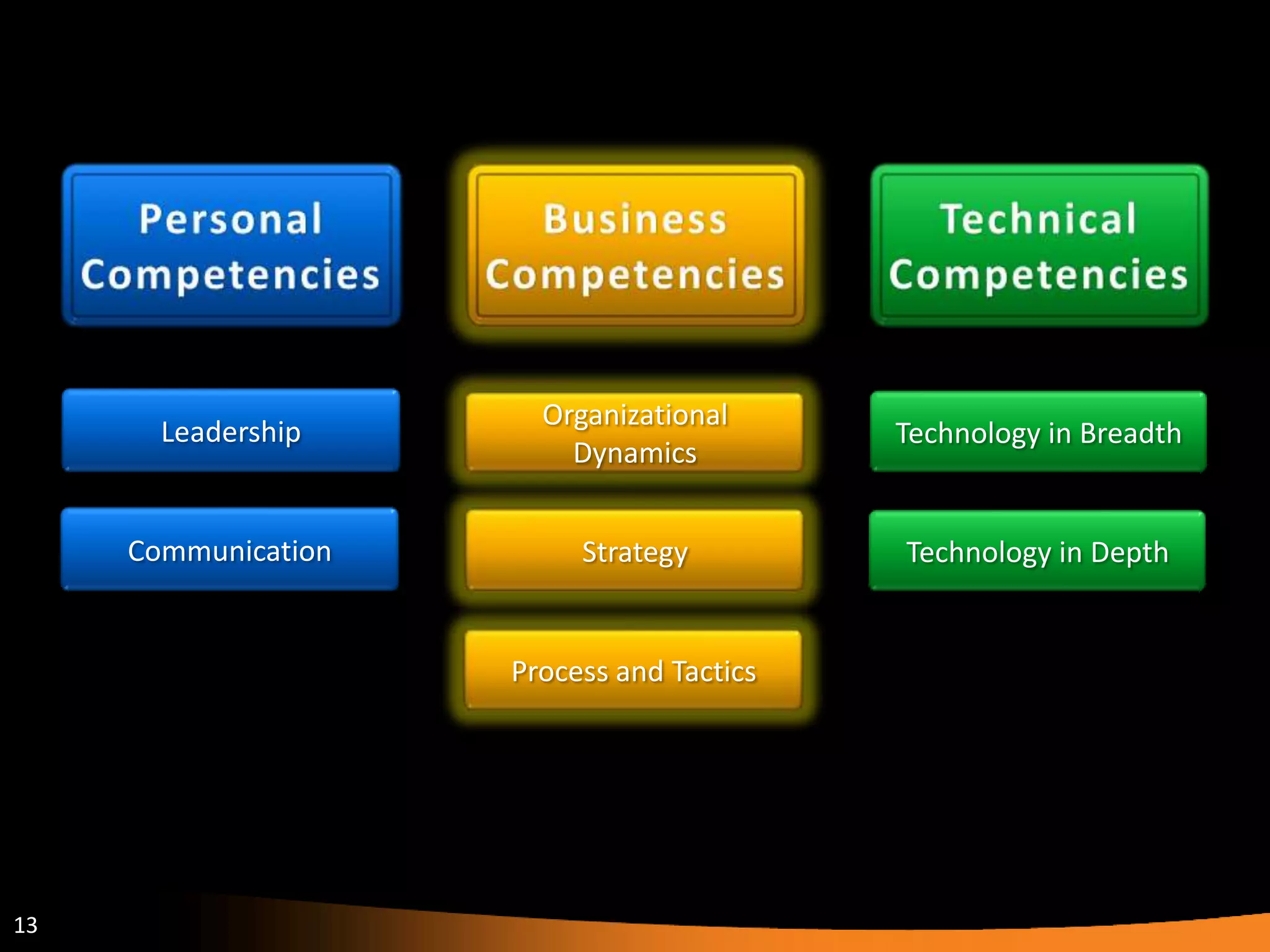
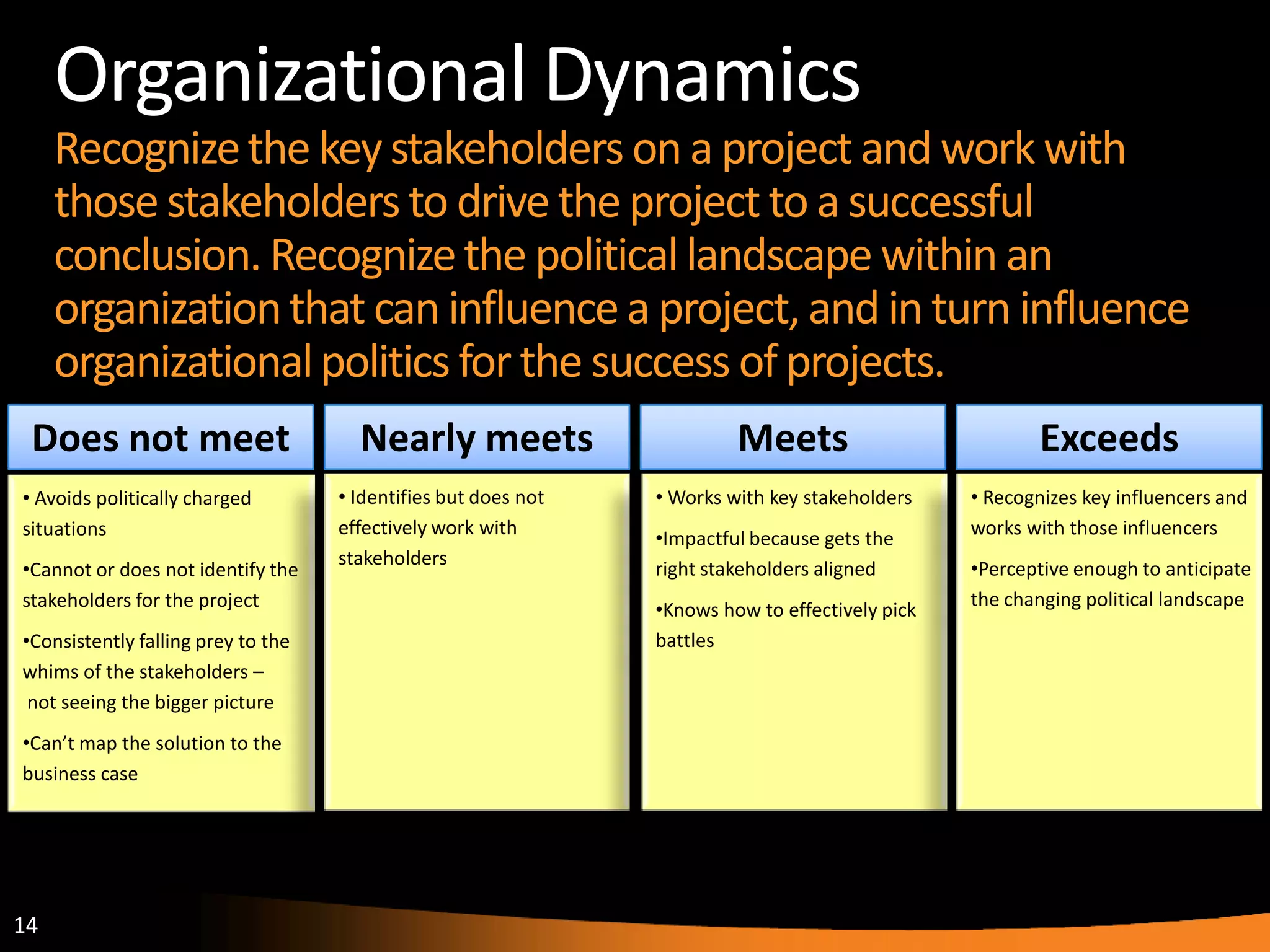
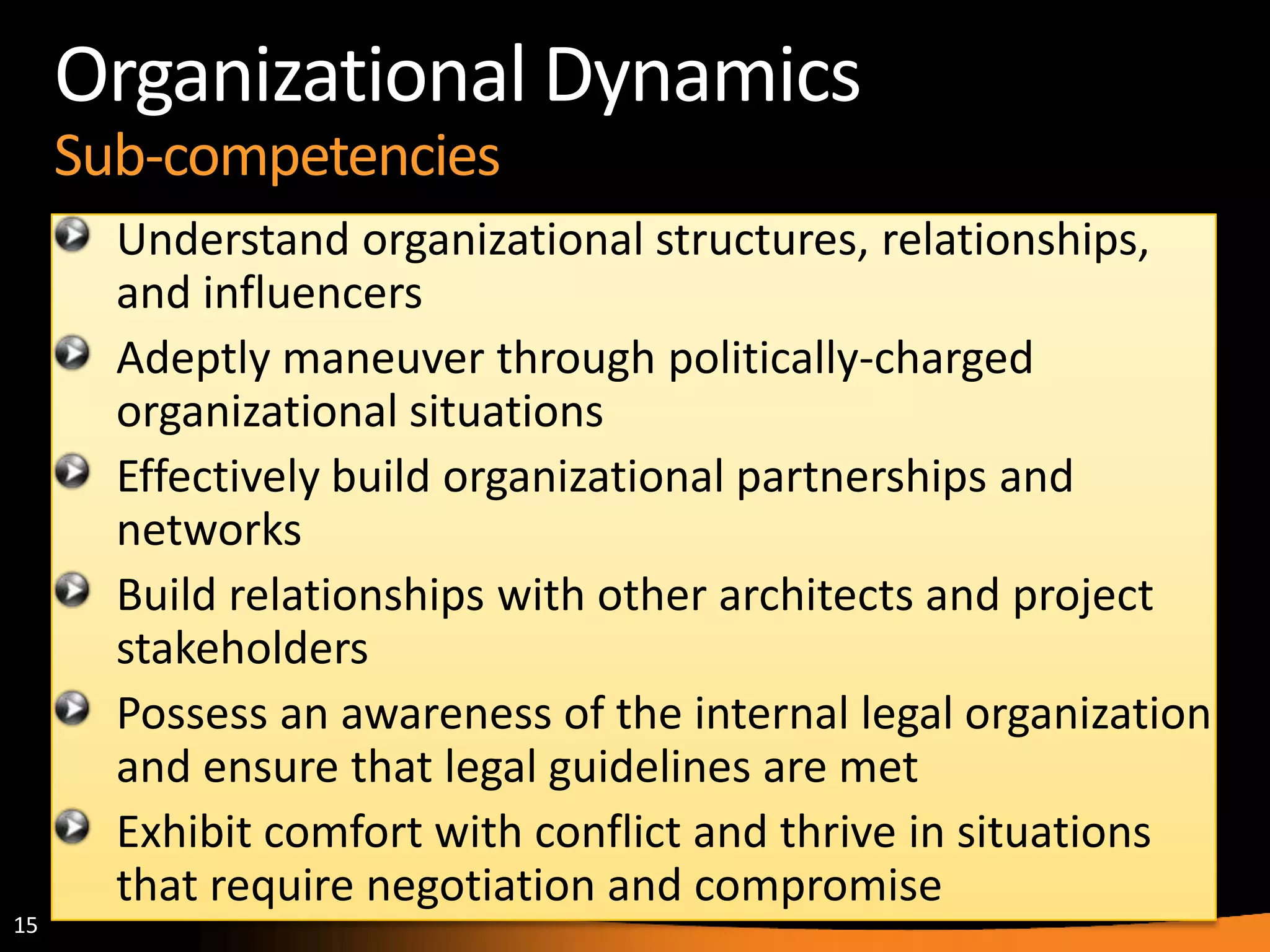
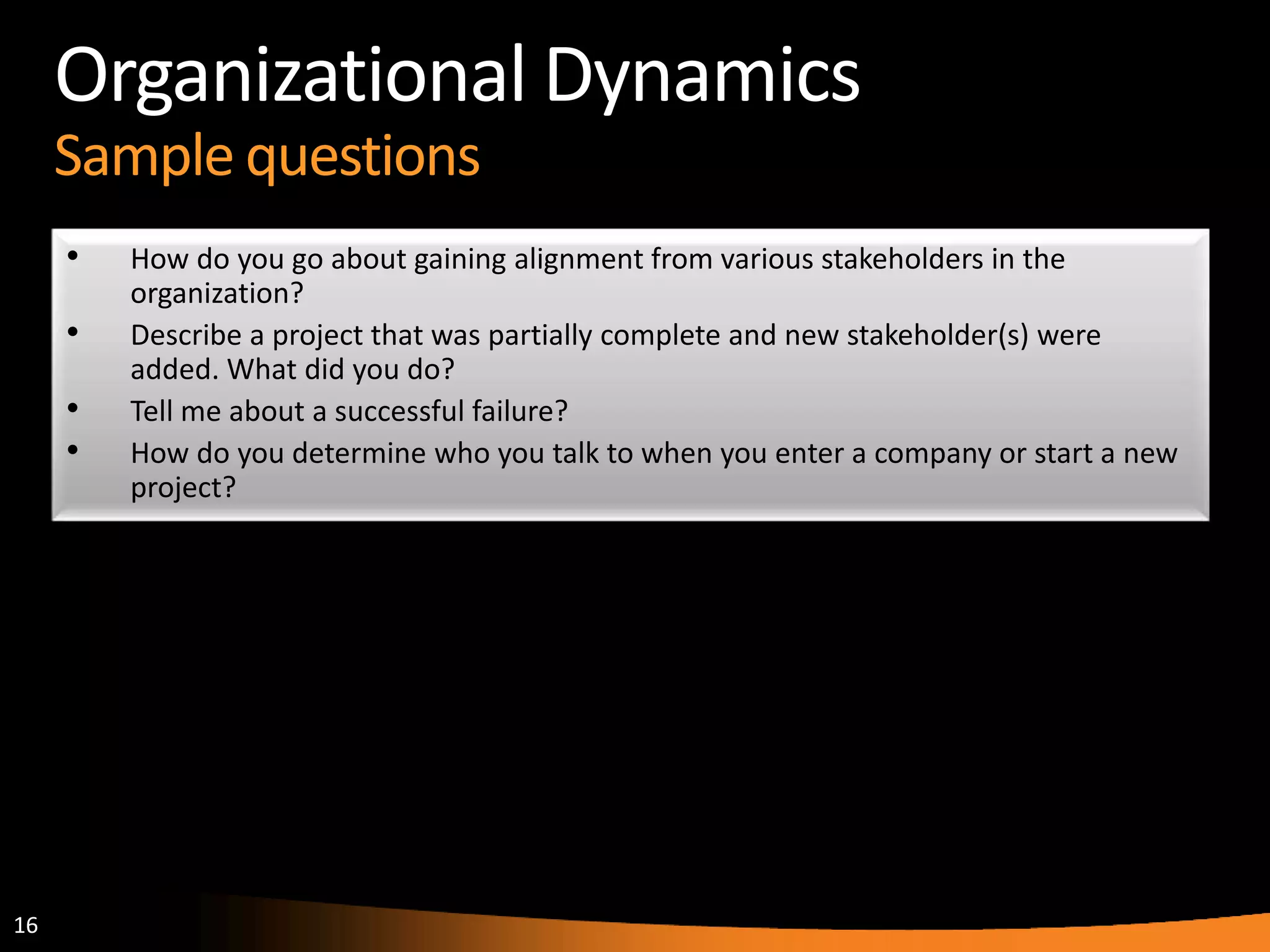
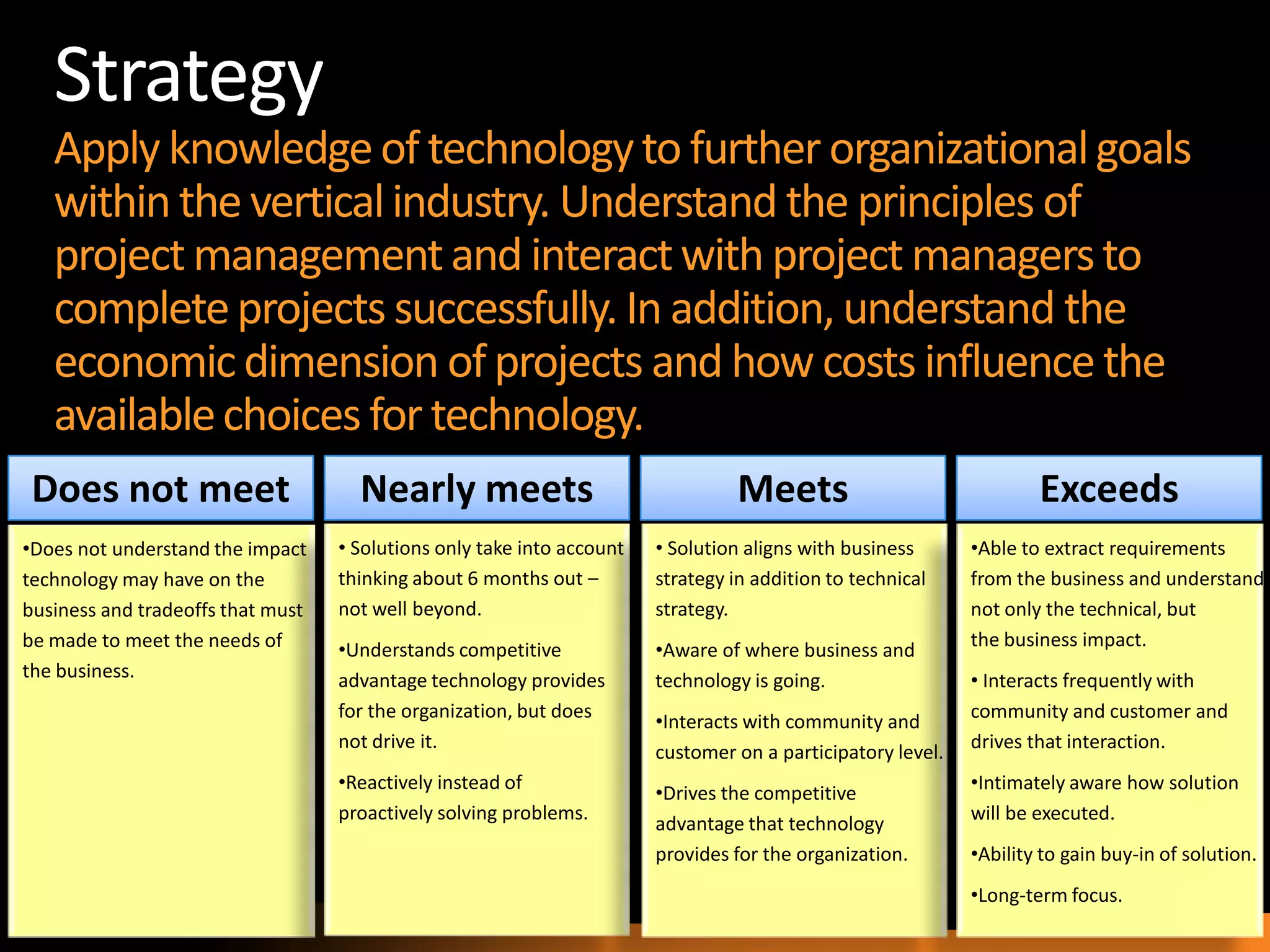
![18
Strategy
Sub-competencies
Explain the business strategy of your organization
Demonstrate knowledge of industry-specific trends with respect to architecture
Balance the needs of users, management, operations, support, finance, and
technology with the strategic needs of the business, including business benefits and
vendor pricing implications
Demonstrate an understanding of future trends in technology and how they impact
the current and future state of your solution
Describe how you applied knowledge of industry ( HIPAA , Basel II, Sarbanes-Oxley,
HL7, etc.) regulations to create your solution
Use enterprise frameworks (for example, the Zachman Framework for Enterprise
Architecture or The Open Group Architecture Framework [TOGAF]) to map the
business strategy of the organization to your solution
Understand how operational frameworks (for example, Control Objectives for
Information and related Technology [COBIT], IT Infrastructure Library [ITIL], ITSM)
impact your solution
Understand how techniques for achieving operational excellence (for example, Lean
Six Sigma, Total Quality Management [TQM], or Capability Maturity Model [CMM])
impact your solution](https://image.slidesharecdn.com/competenciesofanarchitect-130718232019-phpapp02/75/Competencies-of-an-architect-18-2048.jpg)
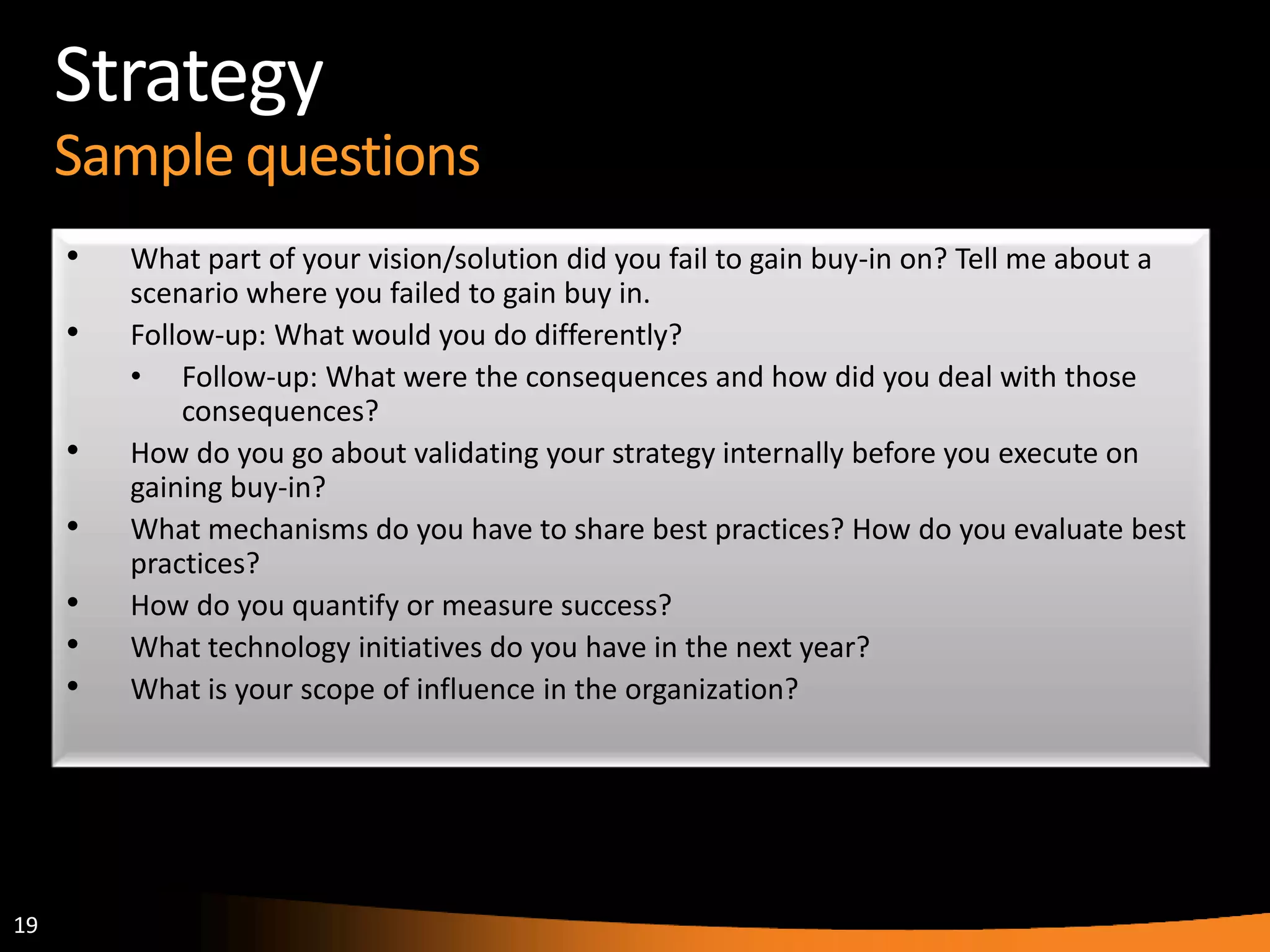
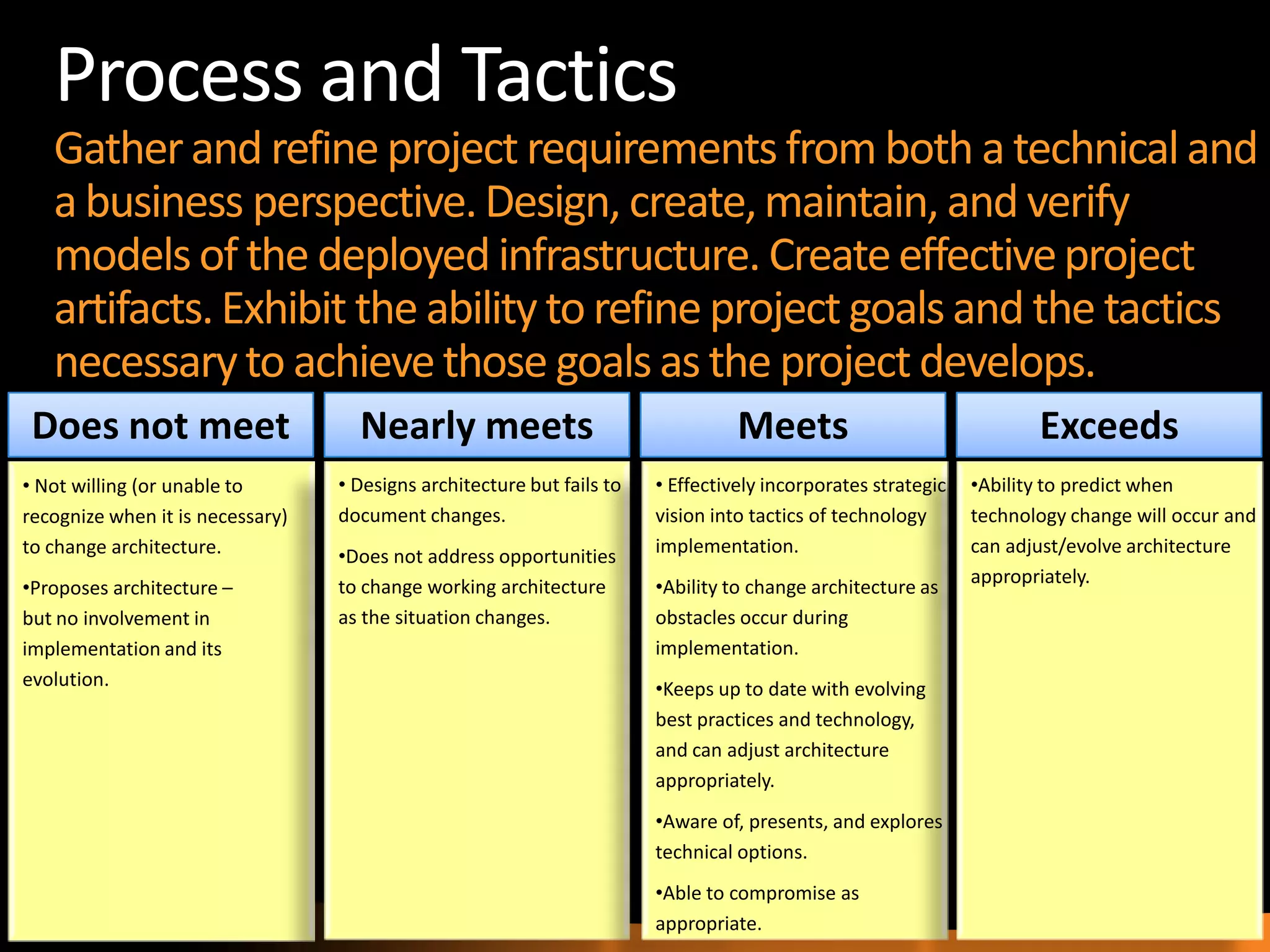
![21
Process and Tactics
Sub-competencies
Use methodologies and/or frameworks to provide predictability to IT and ensure
repeatable success on IT projects
Gather and analyze both technical and business requirements
Envision and create an solution that meets requirements and can be
implemented using modeling techniques and mapping their points of integration
Prove the feasibility of a design (POC, pilots, prototypes, etc.)
Use capacity planning techniques to ensure scalable designs
Create the design artifacts that are required to deliver and to maintain the
solution
Understand the impact of internal policies (for example, service level agreements
[SLAs])
Guide a project through to completion and audit compliance with specifications
and the overall intent of the architecture
Review the ongoing implementation for opportunities for improvement and
refine the model as requirements change, implementation choices evolve, etc.
Contribute to technical project management](https://image.slidesharecdn.com/competenciesofanarchitect-130718232019-phpapp02/75/Competencies-of-an-architect-21-2048.jpg)
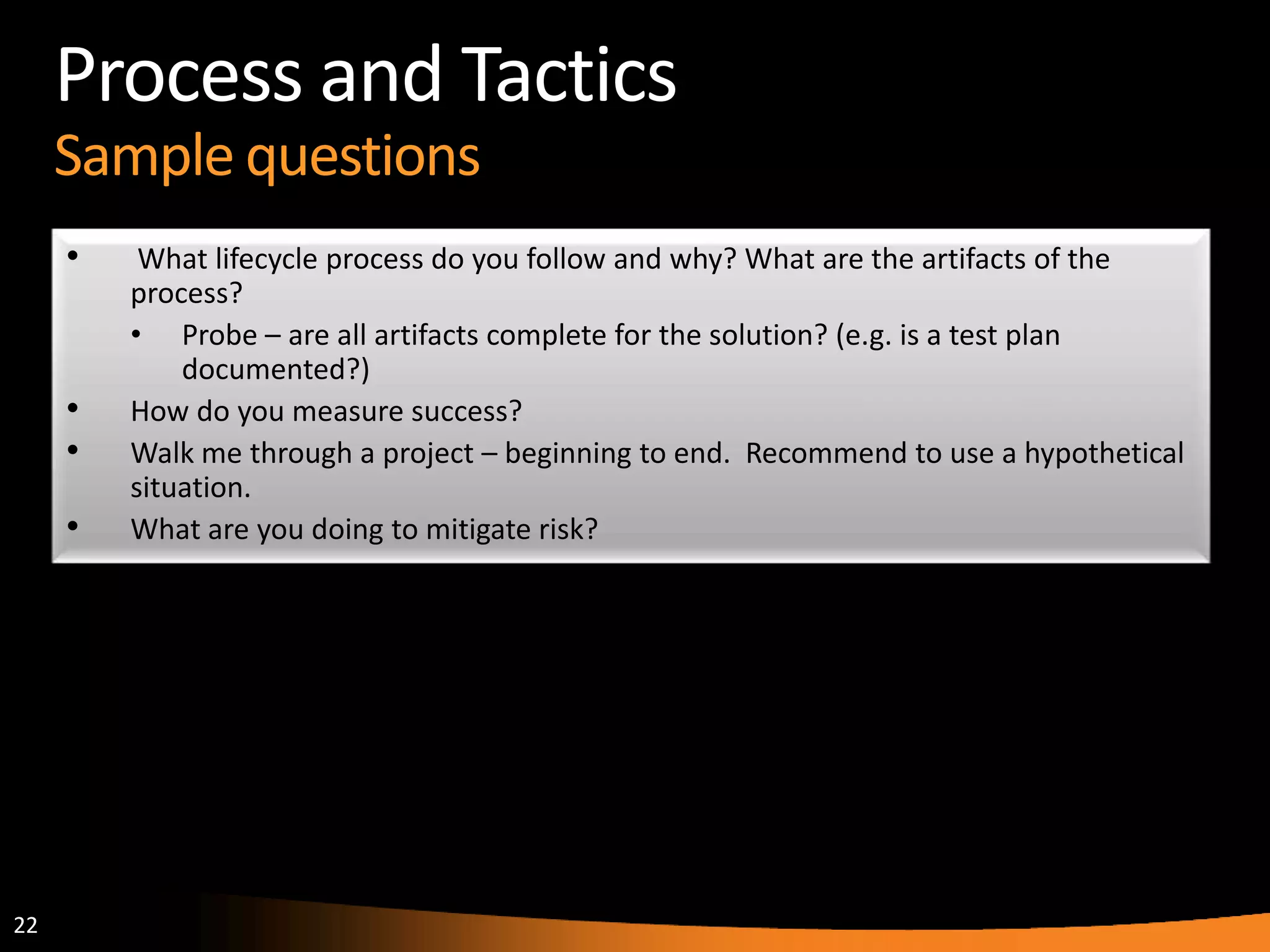
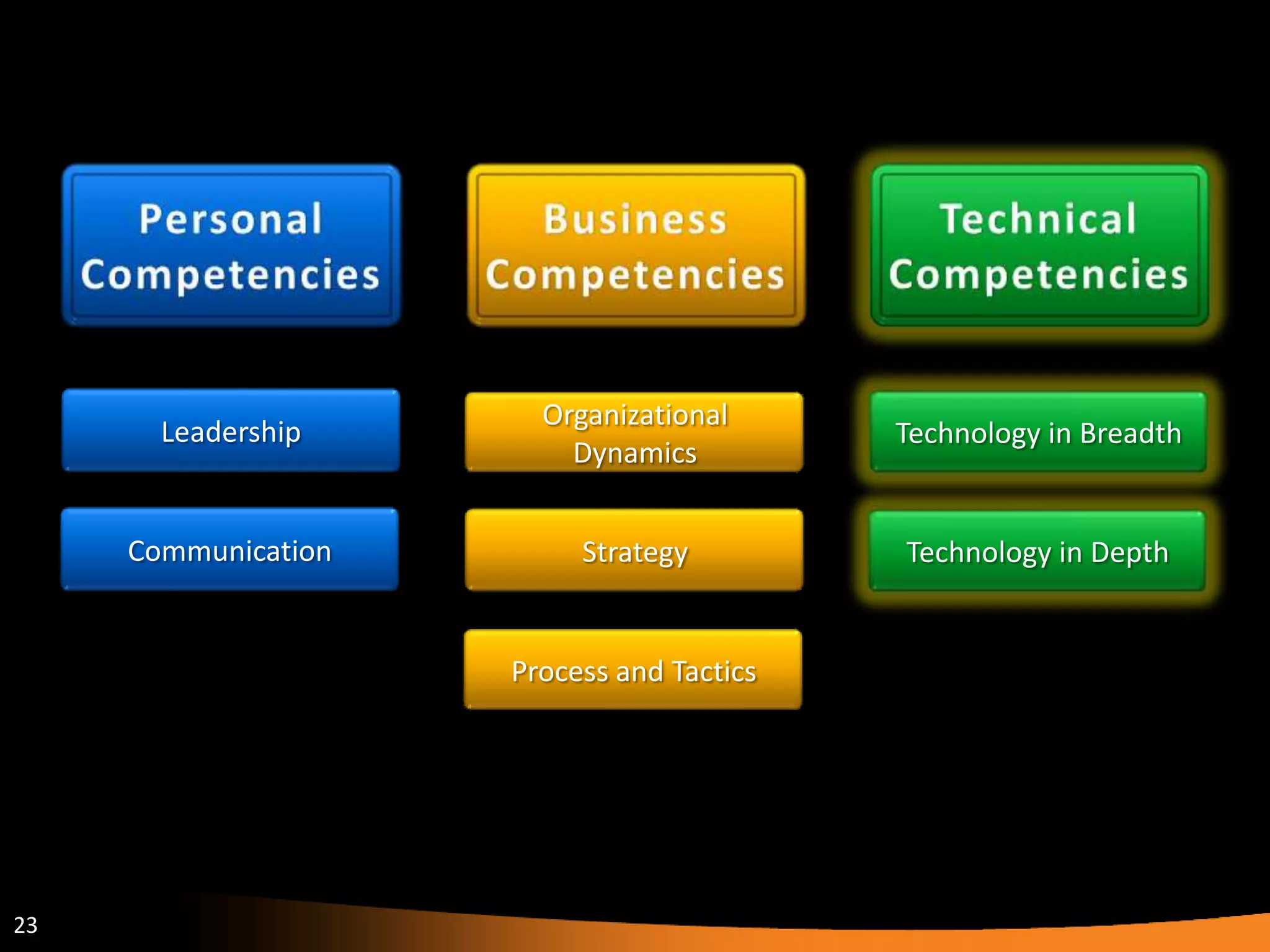
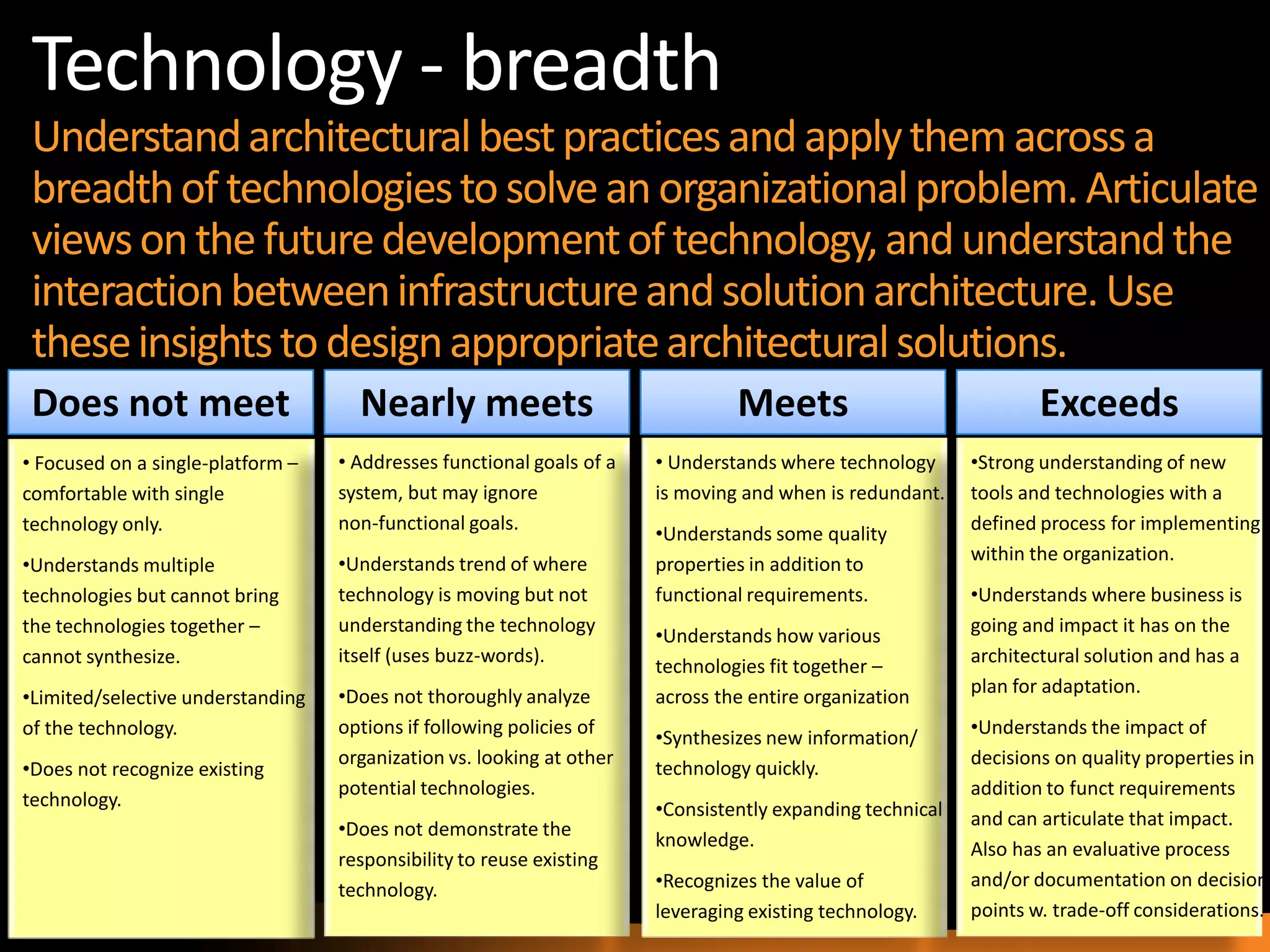
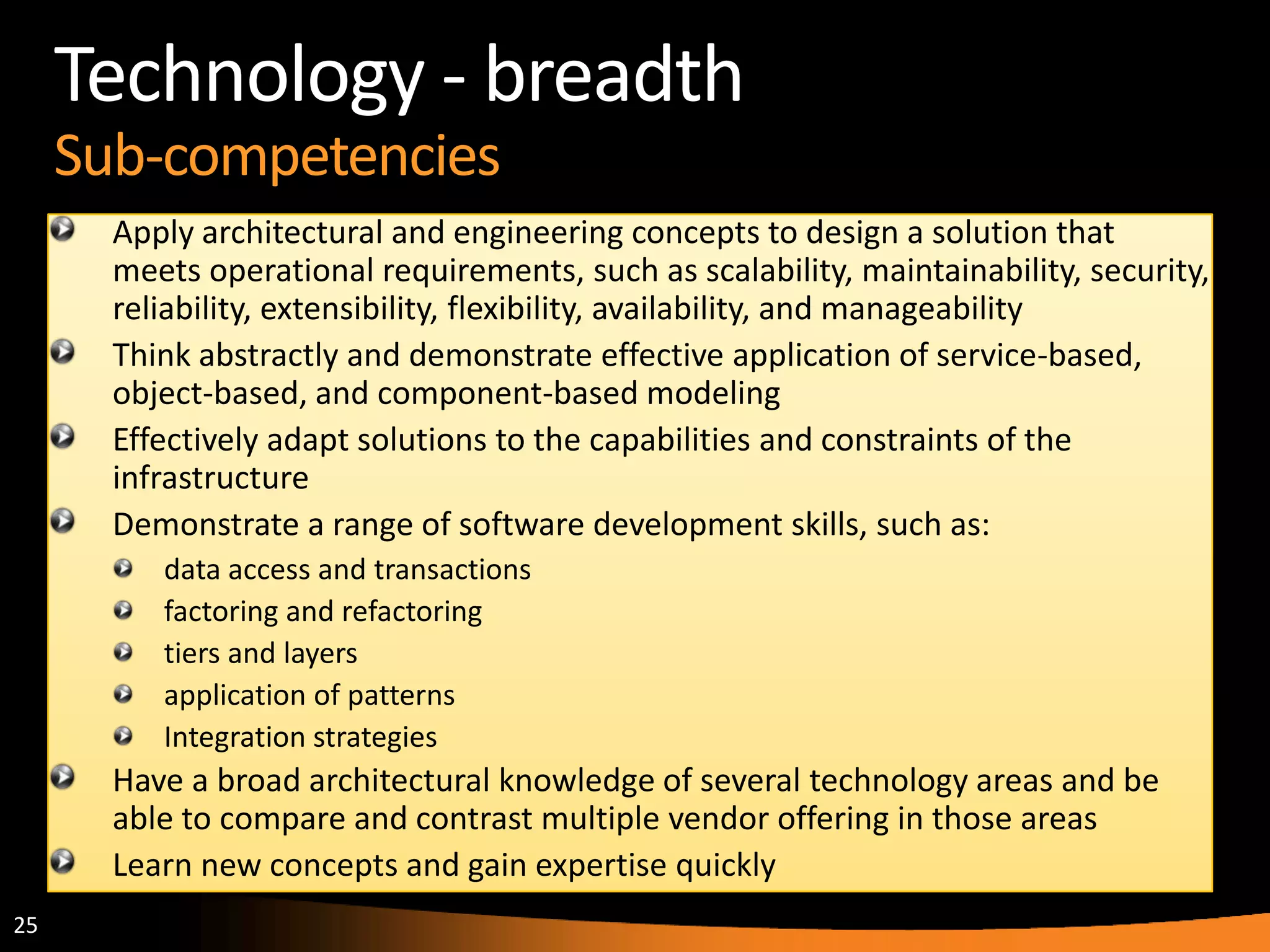

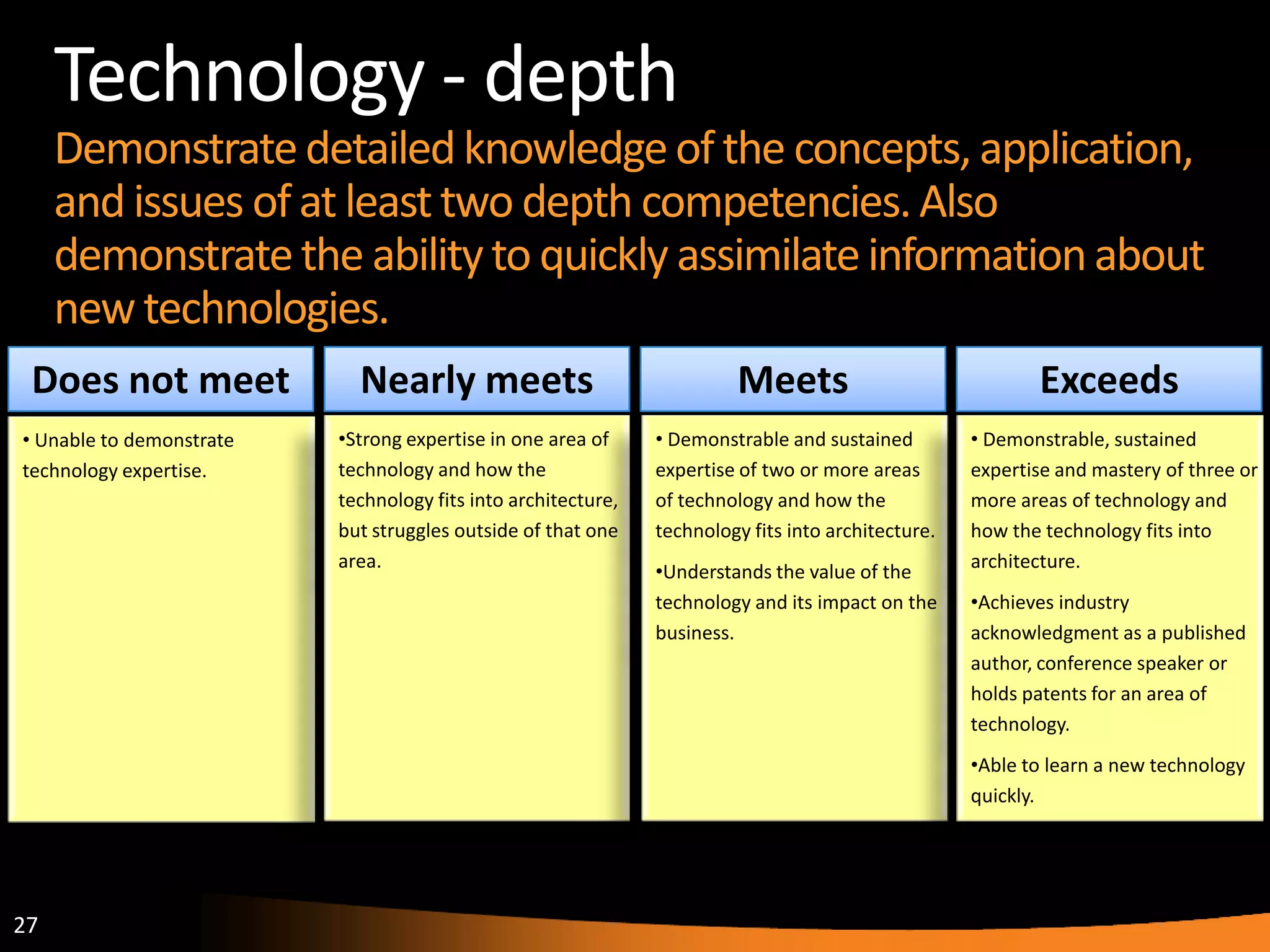
![28
Technology - depth
Sub-competencies
Examples of depth competencies include, but are not
limited to, the following:
Component and solution modeling
Solutions frameworks (for example, the Microsoft .NET
Framework and Java 2 Platform, Enterprise Edition [JEE])
Integration , as evidenced by knowledge of traditional
enterprise application integration (EAI) products such as
Microsoft BizTalk Server, IBM WebSphere, or BEA WebLogic
User experience, including smart clients and adaptive UI
Data structuring and management](https://image.slidesharecdn.com/competenciesofanarchitect-130718232019-phpapp02/75/Competencies-of-an-architect-28-2048.jpg)

